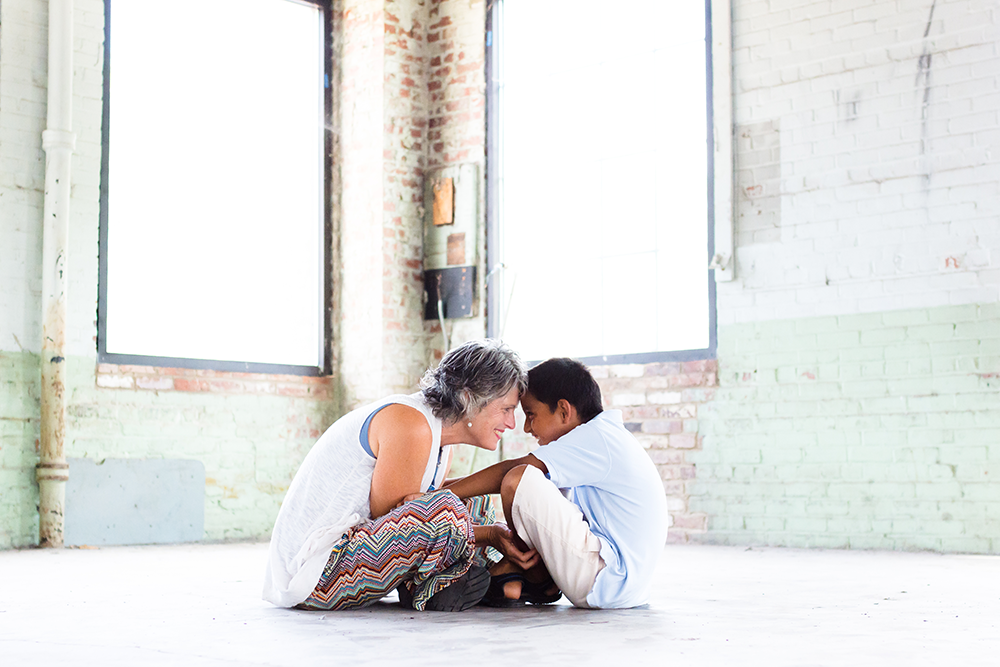12 Tips for Welcoming Home a Child Through Adoption

If you’re preparing to welcome your child home through adoption, there are some very practical things you can do to help smooth your child’s transition home. The following ideas may be a help to you in the period surrounding placement:
1. Find ways to help your child build connection with the new environment they will enter when they come home
If at all possible, send photos of your home and family to your child prior to placement. This will aid in helping to ease the uncertainties that are inherent in such a large transition. Make sure to mark each photo with the names of each family member or room so that caretakers can accurately interface with your child on the photos. Suggested photos would include immediate family members, the outside of your house, play area/yard, shared family space, their bedroom and their bed. It can also be a help to send a blanket or stuffed animal that appears in the photos you send (to ensure against loss, buy a set of two…one is sent during the wait and the other one waits at home for their arrival).
2. Learn how your child likes to play
Since you will most likely have time with your child in their birth country before returning home, find out as much as possible about how they like to play. Take them to the park and watch them have fun. Once you are home, try to recreate this same type of play once you’re home. If you are able to visit the orphanage or foster home during your travels where your child received care, ask questions about their schedule and preferences on play if possible.
3. Cook familiar food
Take some time to research what type of diet your child was accustomed to before you travel. If you are able to visit the home or orphanage where your child received care, ask your child’s caregivers about their specific diet and preferences. When eating out during your adoption trip, buffets can also be a very helpful resource as you learn their likes and dislikes in foods. Once home, take time to ease them into your home cuisine, trying to include foods that are familiar to them. Keeping a few known “likes” always at hand for snacks or meals can help reassure a child that they have food security in your care. Learn to make a few simple dishes from their culture or grab carryout from a restaurant that has familiar cultural dishes. This can be a treat for everyone and will help reassure your child.
4. Minimize homecoming hoopla
The homecoming experience itself can be overwhelming for both the child and the parents. After hours and hours of traveling, it might be difficult for you to entertain extended family members and friends while also caring for the needs of your new child. With the transition in caregivers, foods, schedule, sights, sounds, etc. continuously in play for a child transitioning into their new family, the added sensory intake of navigating the attention of strangers can initially feel overwhelming to the child. Postpone visits for a few days while you recover from jet lag, allowing your child to make their initial transition home at their own pace.
5. Return to your schedule as soon as possible
At first, time differences and jet lag can wreak havoc with your schedule and routine, but make sure that you start moving in the direction of your regular bed times, meal times, play times, prayer times – whatever is the norm for your family – as soon as possible. Not only will the routine help your child’s transition, it will also help the rest of the family adjust to their new normal.
6. Adjust sleeping arrangements
At least for the first few nights, sleep in close proximity to your child. It’s best to be close in case they have a nightmare, need to use the bathroom, or need a drink of water. Keep in mind that every aspect of your child’s life changed the moment they entered your family, so expect some bumps along the way.
7. Be sensitive to the impact of change
The separation from the familiar as well as the fear of the unknown can cause children to react in different ways. The best thing to do in situations where the child is grieving for the familiar is to pray for comfort and let the child lead. If they need to be held, sung to, or just left alone for a bit, try to be sensitive to it. It takes time.
8. Transcend the language barrier
Since language can be an issue early on, try watching cartoons or children’s movies in which the dialogue is minimal. Practice some basic phrases in their native language to help make the initial transition easier. There are also a number of translation apps that can be a great help early on in the language learning process!
9. Take time for yourselves too
It’s important to take care of yourself too! Even if it means waiting until the kids are in bed, fixing a snack, and finding a relaxing way to unplug! Carving out time to recharge will pay dividends not only for you but also for your entire family.
10. Understand cultural differences and expectations
For children transitioning home from abroad or who have been living in institutions, visits to Disneyland, sporting events, or large parties can be overwhelming and even scary! Let these types of events fit more naturally into your schedule at a later time.
11. Be flexible with discipline
While discipline is certainly important, flexibility in the early days is wise. This is especially important because it is possible that children will not have experienced consistent, loving discipline in their former environment. Additionally, the language barrier may not allow them to fully understand why they are being corrected. Consider attending Show Hope’s Hope for the Journey Conference and Simulcast (previously the Empowered to Connect Conference) at a location near you.
12. Pray, pray, pray
Most importantly, pray as individuals, as a couple if you are married, and as a family for your new child. Pray for patience and wisdom. Pray that your child will find their identity in the One who has loved them from the start.
What are some other suggestions you have that can help families as they prepare to welcome their child home? Comment below and let us know!
To stay up to date with the work of Show Hope, follow us on Instagram, Facebook, and Twitter or subscribe to our newsletter!


